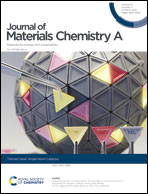Synchrotron-radiation spectroscopic identification towards diverse local environments of single-atom catalysts
Abstract
Single-atom catalysts (SACs) that can achieve maximum atom utilization and provide well-defined active sites in energy conversion reactions have attracted much attention in the past decade. In general, the local structures of active sites in SACs largely determine their catalytic activity and selectivity. Therefore, identifying the local environments of active sites in specific SACs is essential to understand their catalytic functions in various reactions. Recent studies have demonstrated that synchrotron-radiation spectroscopic characterization methods possess unparalleled capacity in the identification of local environments of SACs due to their wide energy regulation window and high resolution. In this review, we aim to discuss the practical applications of some ex/in situ synchrotron-radiation spectroscopic techniques in recently reported advanced SACs. The experimental analyses from various techniques, such as X-ray absorption spectroscopy (XAS), photoemission spectroscopy (PES) and Fourier-transform infrared spectroscopy (FTIR), are highlighted. The built structure–activity relationships towards identified active sites are also discussed. Finally, a summary of spectral imputs and related significance is made and the research perspectives are suggested.

- This article is part of the themed collection: Single-Atom Catalysis


 Please wait while we load your content...
Please wait while we load your content...